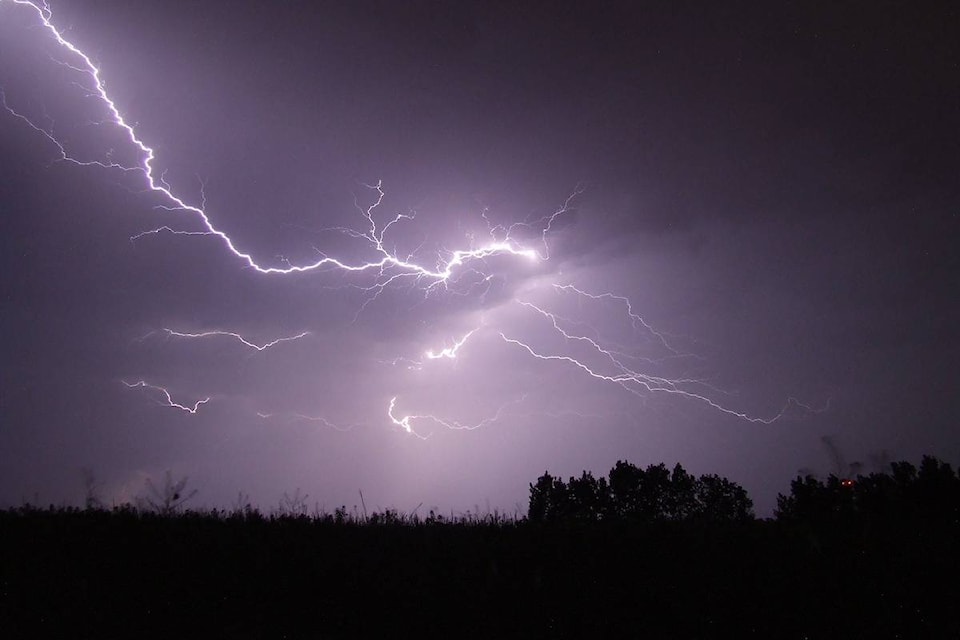Recent thunderstorm activity has been worsening the wildfire situation in the Kamloops Fire Centre, where lightning strikes have caused 59 new fire starts since July 18, BC Wildfire Service (BCWS) said Tuesday afternoon.
The region has seen 1,118 lightning strikes since July 18. Sixty-three wildfires are currently burning in the Kamloops Centre, 46 of which are out of control.
BCWS relies on Weather Services to forecast when a weather event is expected to move through an area. This provides a chance to increase preparedness and make crews available to respond to new fires. BCWS said thunderstorms are the most notable weather events that are monitored for new wildfire starts, as well as subtropical flows that can produce dry lightning, and dry frontal passages that may produce strong winds, fuelling the spread of fires.
BCWS said gradient winds were expected to continue throughout the Kamloops Fire Centre Tuesday afternoon with stronger winds in the Lillooet Fire Zone. It said temperatures will cool slightly from what has been seen in the past few days but will remain relatively warm, and light winds are forecasted overnight.
On Wednesday, July 24, BCWS is expecting stronger southwest winds along the Fraser Canyon with slightly reduced winds throughout Penticton, Kamloops and Vernon fire zones. There will potentially be overnight showers in the northeast portions of the Kamloops Fire Centre Wednesday evening, but no rain is forecasted for the Merritt and Penticton zones.
BCWS says lightning accompanied by precipitation may cause ignition but not immediately grow into a wildfire, and described a situation called a holdover fire in which the heat from the initial lightning strike simmers underground, igniting above ground once temperatures increase and fuels dry.
"By monitoring storms and lightning strikes through an area, the BC Wildfire Service can better prepare for these potential new ignitions," BCWS said.


